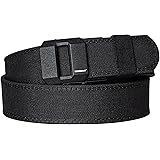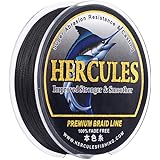The dramatic footage of the fishing vessel Resolution expertly navigating the notorious Greymouth bar provides a vivid glimpse into one of the most challenging feats in maritime operations. For seasoned mariners and those with an appreciation for the raw power of the ocean, the sight of a fishing boat crossing such a formidable natural barrier often elicits a visceral “Wow” – a testament to both the inherent danger and the exceptional seamanship required. This isn’t merely a routine passage; it’s a dynamic interplay of skill, experience, and respect for an unforgiving environment, particularly crucial for the commercial fishing fleet that relies on safe passage through these treacherous waterways.
River bars, formed by the interaction of river currents, tidal flows, and ocean swells, are inherently hazardous. They typically consist of shifting sand or gravel shoals at the mouth of a river, where depths can vary dramatically and without warning. The incoming ocean swell, encountering shallower water, often reforms into steep, powerful breaking waves, presenting a significant threat to any vessel attempting transit. Furthermore, the outflowing river current, especially during periods of heavy rain, can create opposing forces that exacerbate the confused sea state, making navigation a precarious undertaking that demands precision and acute awareness from the vessel master.
Understanding the Peril: The Greymouth Bar’s Unique Challenges
The Greymouth bar, situated on New Zealand’s rugged West Coast, is legendary among mariners for its challenging and often unpredictable conditions. It marks the entrance to the Grey River, a vital artery for the region’s fishing and resource industries. The specific geomorphology of this bar, combined with its exposure to the Tasman Sea’s powerful westerly swells, creates a unique confluence of dangers. Shifting sands, strong currents, and a narrow channel often lead to intense breaking waves that can quickly overwhelm even robust vessels.
Historically, the Greymouth bar has claimed numerous ships and lives, etching its reputation as one of the most perilous harbor entrances globally. Mariners approaching the bar must contend with shallow depths that fluctuate daily, sometimes by several meters, and swells that can rear up unexpectedly into towering walls of water. The interaction between the river’s outflow and the incoming ocean swell creates a highly confused and turbulent sea state, frequently characterized by breaking waves that can exert immense force on a vessel’s hull and superstructure. Navigation through such conditions is not just about power, but about precise timing and an intimate understanding of the bar’s current temperament.
Mastering the Crossing: Essential Seamanship and Vessel Handling
Successfully navigating a bar like Greymouth is a masterclass in seamanship, requiring a rare combination of local knowledge, astute observation, and expert vessel handling. The skipper of a fishing boat like the Resolution must possess an intimate understanding of the bar’s characteristics, gained over countless transits and often passed down through generations of mariners. This local knowledge includes preferred channels, understanding how tides and river flow influence wave patterns, and the subtle signs that indicate dangerous conditions are forming. These insights are critical, as official charts can only provide a general overview, and real-time conditions frequently dictate the safest approach.
Timing the transit is paramount; often, this means waiting for specific tidal windows when the bar is “workable,” or for a lull in the swell. Once committed, the vessel must maintain adequate speed to ensure steerage and control, without being so fast as to launch off a wave or risk collision with the bottom. Managing engine power precisely to meet the surge and ebb of the waves, anticipating the vessel’s reaction to breaking water, and maintaining situational awareness of other traffic or hazards are all crucial elements. This is a high-stakes endeavor where mistakes can have immediate and severe consequences, demanding unwavering focus and decisive action from the entire crew.
Vessel Design and Safety Protocols for Bar Operations
Fishing vessels operating in areas with challenging bar crossings, such as the Resolution, are often specifically designed and equipped to withstand such arduous conditions. Key design considerations include robust hull construction, often with increased plating thickness and reinforced scantlings to absorb the impact of breaking waves. Powerful and reliable propulsion systems are essential, providing the necessary thrust to maintain speed and steerage through turbulent waters. Furthermore, these vessels typically feature excellent stability characteristics, minimizing the risk of capsize in steep seas, and possess high freeboard to reduce water intake over the bow.
Beyond the vessel’s inherent capabilities, stringent safety protocols and advanced technology play a critical role in mitigating risks. Modern navigation systems, including high-resolution radar and real-time depth sounders, provide crucial data to the skipper. Communication systems, such as VHF radio, are essential for maintaining contact with shore-based authorities and other vessels, allowing for the sharing of real-time conditions and coordinating emergency responses. In some cases, dedicated bar pilots with unparalleled local expertise guide vessels, while many ports maintain bar advisory systems that provide up-to-the-minute information on depths, wave heights, and recommended transit times. These layered safety measures collectively contribute to reducing the inherent dangers of a Greymouth bar crossing, protecting both vessels and the lives of those aboard.








